India is one destination that will give you a total whirlwind of an experience. No matter which part of the country you visit, you’re in for the trip of a lifetime – heartwarming locals, stunning architecture juxtaposed against the bustle of markets, the array of food that will (literally) spice up your experience, as well as the dazzling myriad of sights and sounds will leave an indelible mark. Yet, apart from the usual touristy attractions such as the Taj Mahal or the Red Fort in New Delhi, there’s just so much more to be discovered!
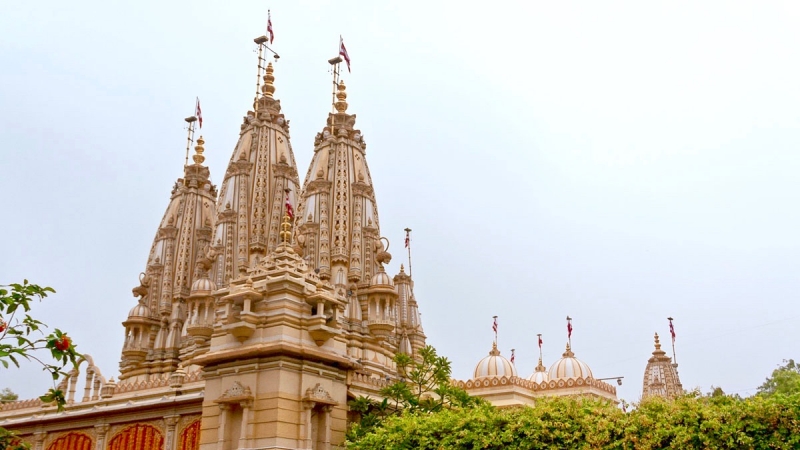
Image credit: 09bec027
Whether you’re planning a trip or looking just to get inspired, let the charming city of Ahmedabad in Gujarat creep its way into your heart. As one of India’s undiscovered hidden gems, Ahmedabad has been recently joined the ranks of UNESCO World Heritage cities which include well-known cities like Amsterdam, Paris, Cairo and Prague. It’s been steadily attracting attention as one of India’s must-see destinations, so why not start planning a visit before hordes of tourists start descending?
Ahmedabad is a city rich in both history and culture, with history dating back to the early 1400s and roots in a diverse range of cultural influences which include Muslim, Hindu and Jain traditions. From exploring the walled Bhadra fort and admiring different mosques or temples, that showcase the best of ancient islamic and mughal architecture, to taking a peek into the local lifestyle as you wander through the streets lined with ancient Ahmedabad housing known as pol, the sights and sounds of this city will surely broaden your perspective and fill your soul. Here are 10 sights that prove why you should visit this darling gem of a city!
1. Akshardham Temple
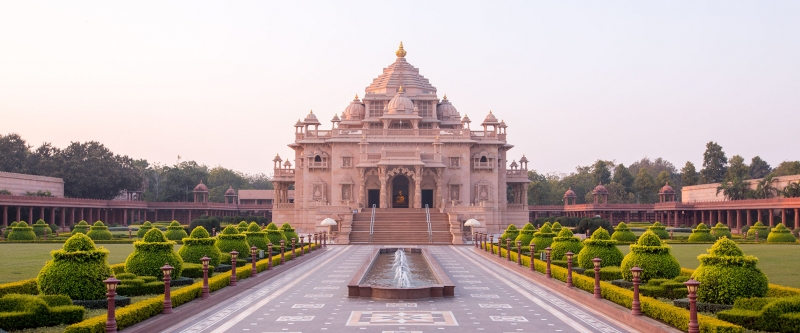
Image credit: Akshardam Gujarat
Not to be confused with the Akshardham complex in New Delhi, the Swaminarayan Akshardham in Ahmedabad is a magnificent structure and an equally astounding testament of devotion. The temple took 13 years to build and was inspired by Pramukh Swami, who was the spiritual head of Swaminarayan Sanstha. Built with 6,000 metric tons of pink sandstone, the temple consists of 97 intricately carved pillars, 220 stone beams and 256 statues of spiritual personalities in Hinduism.
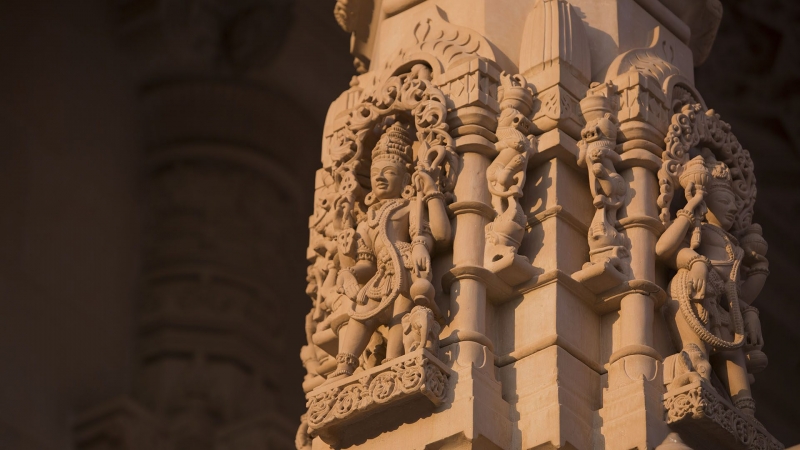
Image credit: Akshardam Gujarat
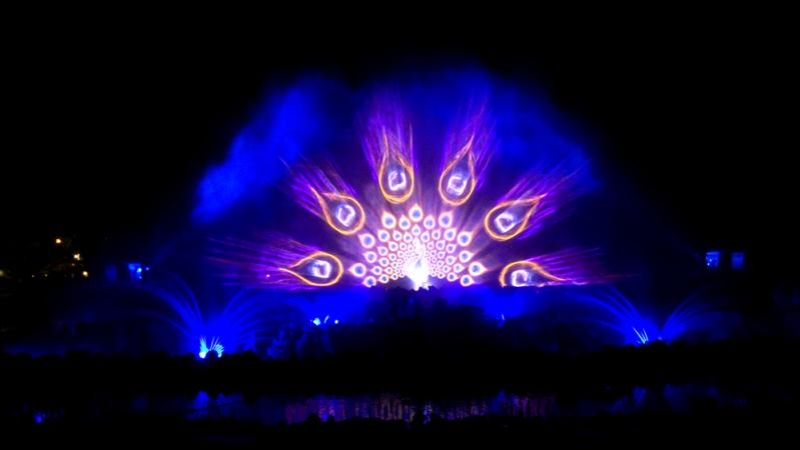
Image credit: Akshardam Gujarat
The temple allows visitors to explore and learn more about Hinduism’s values and traditions in multiple ways. Exhibitions held in the temple use a combination of art, science, culture and spirituality, which create environments that really immerse visitors into the history and spirituality of ancient India. From admiring the physical structure of the temple to a variety of media such as film or even a water multimedia show, be prepared for a soul-stirring and eye-opening experience!
2. Kankaria Lake
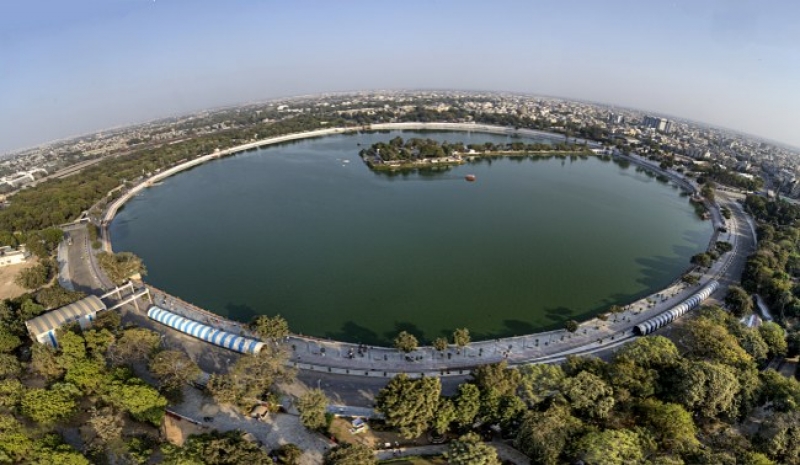
Image credit: Kankaria Lake Website
Situated in the south-eastern part of the city, Kankaria Lake is the second largest lake in Ahmedabad. Built by Sultan Qutb-ud-Din in 1451, the polygon-shaped lake has a periphery of about 2.5km. The lake has been developed into an entertainment hub, and is surrounded by many public attractions. The entertainment ground in the middle of the lake is called Nagina Wadi, and in it lies the Ahmedabad Zoo, a Natural History Museum and plenty of activities such as tethered balloon rides, water park rides and an open air theatre too!
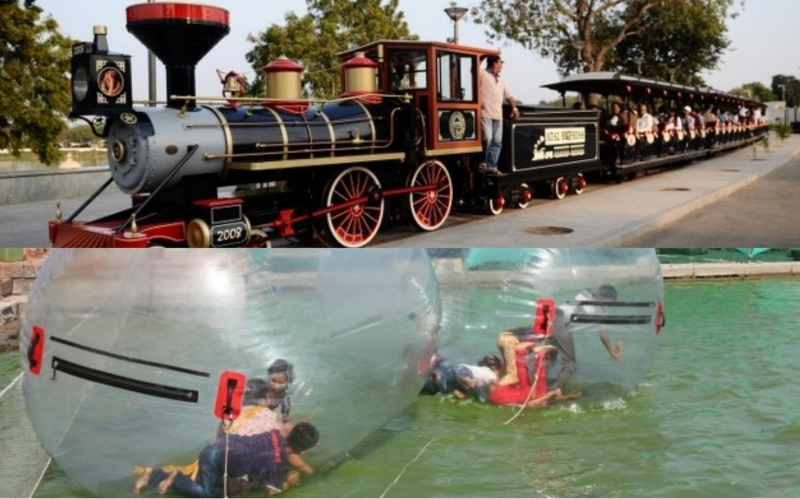
Image credit: Kankaria Lake Website
Nagina Wadi is often bustling up crowds, food and entertainment. Have fun riding the mini train, or play in giant plastic balls where you can “paddle” around the lake! There are also other attractions like a mirror maze, butterfly park and even a high element tree-top maze. If you’re not feeling adventurous, swing by at night to enjoy the spectacular water and light show display!
3. Adalaj Ni Vav (Adalaj Stepwell)
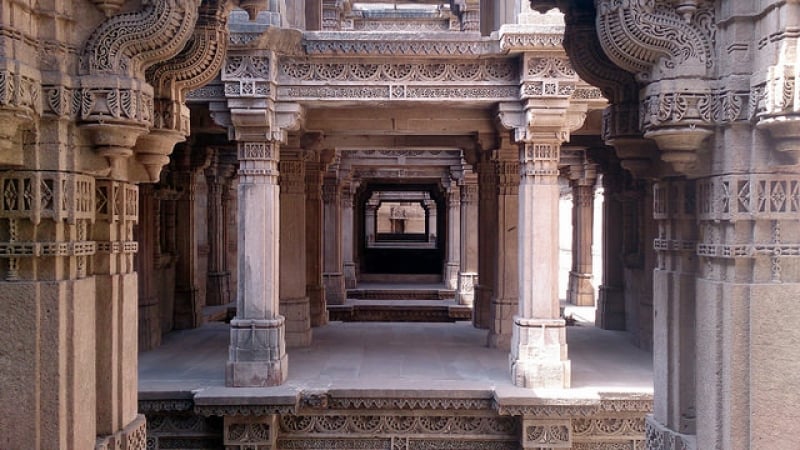
Image credit: ddasedEn
The Adalaj Ni Vav or The Adalaj Stepwell can be found in the quiet village of Adalaj. This gorgeous five-storey stepwell was built in 1499 by Queen Rudabai, wife of the Vaghela chief Veersinh. It served not only as a cultural space, but also as a spiritual refuge where the villagers would dutifully come every morning to collect water and offer prayers to carvings of deities on the walls. The Adalaj Stepwell is truly a unique piece of architecture worth checking out — although there is an opening in the ceiling which allows light and air to enter the octagonal well, direct sunlight only reaches the flight of steps only for a brief period each day. Some researchers have noted that the atmosphere inside the well is six degrees cooler than the outside! How cool is that?

Image credit: ddasedEn
Gape in awe as you take a closer look at the masterfully intricate Islamic floral patterns which are paired with Hindu and Jain symbolism. As you stroll along, notice how the carvings on the walls depict stories of women churning buttermilk or even the king sitting on a stool. Be sure to also look out for the Ami Khumbor (pot that contains water of life) and Kalp Vriksha (tree of life) which are all carved out from a single stone slab. Like most historical monuments in India, there is a belief that the stepwell is also spiritually protected from evil spirits by the Navagraha, which are nine celestial deities of the Hindu astrology. The stepwell is most certainly a spectacular example of Indo-Islamic architecture and design, and its elegantly decorated interiors are also perfect for taking beautiful photos as well!
4. Bhadra Fort and Teen Darwaja

Image credit: UNESCO
Built on the east bank of the Sabarmati River, the Bhadra Fort was built by Ahmed Shah, the founder of Ahmedabad City, in 1411, and refurbished in 2014 to become a cultural centre for the city. Constructed with beautiful red stones, the Bhadra Fort is an important landmark that signifies the city’s wealth. Belief has it that the Goddess Lakshmi had once visited the Bhadra fort and blessed the Sultan with a city that would always prosper. Indeed, Ahmedabad seems to still enjoy that blessing, as it has been the main hub of trade and commerce in the state of Gujarat through the years.
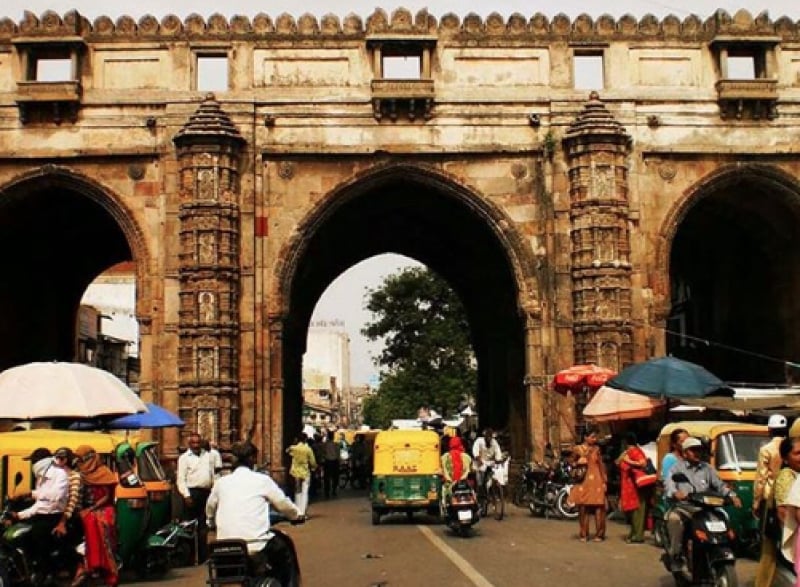
Image credit: Gujarat Tourism Instagram
On the eastern side of the fort stands a triple gateway known as the Teen Darwaza, which used to be an entrance to the royal square Maidan-Shah, an open space located at the east of the fort. Today, along with Bhadra Fort, it stands as one of the most charming ancient structures reminiscent of the city’s glorious history. Visitors can marvel at the intricate carvings of Islamic inscriptions on the arches of the fort, as well as the fine Islamic architecture of the Teen Darwaza. Look out for its central window which depicts the Tree of Life! There are also plenty of bazaars to traipse through within the fort itself, so join the crowds of locals in browsing through the variety of local wares and merchandise!
5. Jhulta Minar (The Shaking Minarets)
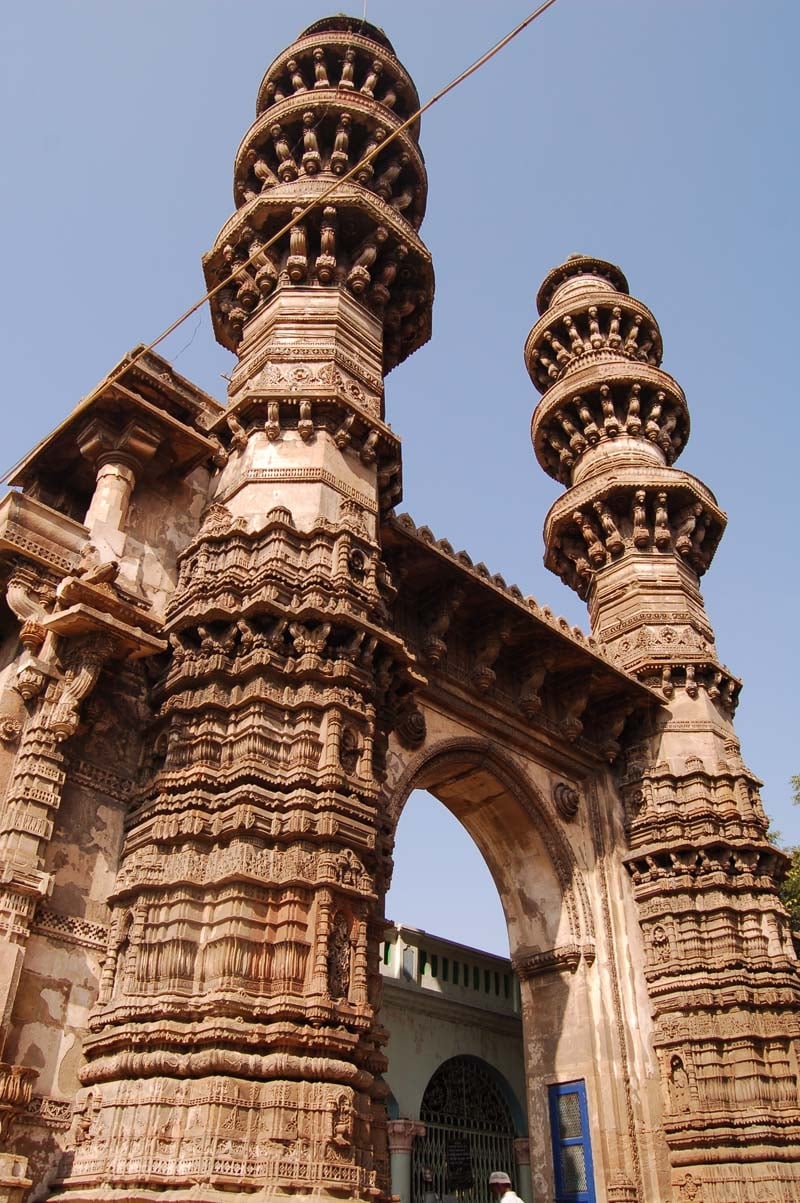
Image credit: Palak gajrawala
Have you ever come across structures which quiver when pushed against, yet are not at risk of falling over and collapsing? The shaking minarets of Sidi Bashir mosque in Ahmedabad is an architectural mystery of its own that has left many skilful architects and pioneering design engineers intrigued. The Sidi Bashir mosque was completed in 1452, but only the minarets (Jhulta Minar) and arched central gateway remain today. The famous minarets of the mosque are three stories tall and decorated with patterned, engraved balconies. When given a gentle push on its upper arc, these 600 year old structures will indeed shake and sway!
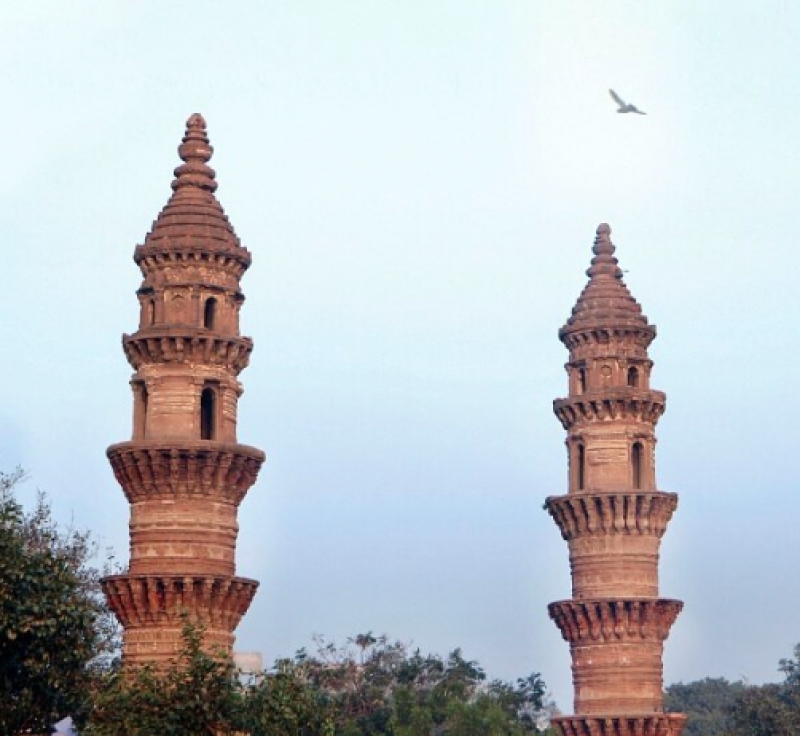
Image credit: Gujarat Tourism Instagram
What’s so enigmatic about this structure, you ask? The fact that architects cannot unravel how one minaret vibrates when the other is shaken since the connecting passage between the two is vibration-free! How strange is that? Sadly, the Archeological Survey of India has now restricted entry into the minarets themselves and one can only enter with special permission. Still, even if you can’t climb up the towers and test them for yourself, the mosque and minarets are definitely still worth a visit — perhaps you could even come up with your own hypothesis to solve the mystery!
6. The Calico Museum of Textiles
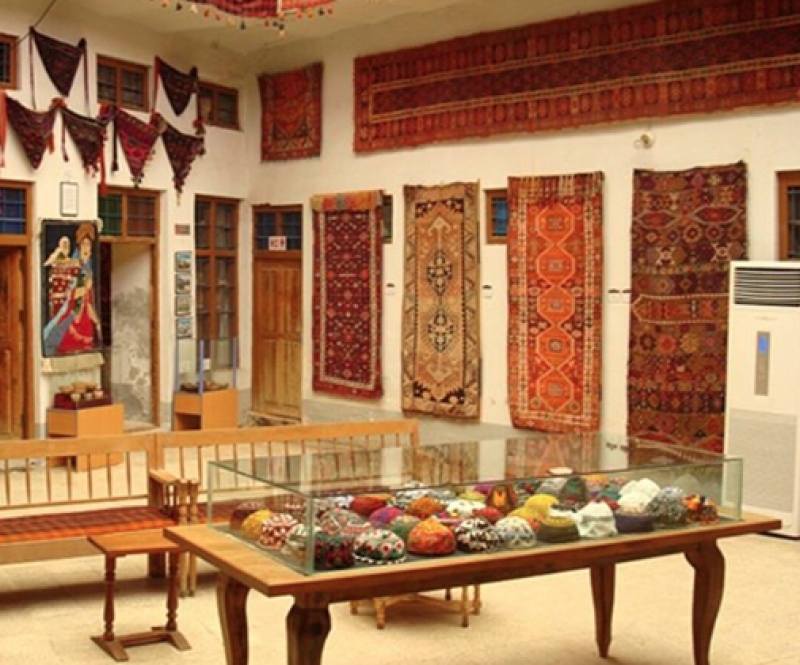
Image credit: Gujarat Tourism Instagram
If you have always been enthralled by the traditional dress and textiles in India, The Calico Museum in Ahmedabad is a must go! As a specialist museum in India that deals with both the historical and technical study of Indian handcrafted textiles and industrial fabric, the Calico Museum is certainly one of its kind in the world. Take your time to look through the extensive fabric collection where you can learn more about the history of textiles and appreciate the stunning display of patterns, textures and vibrant colours.
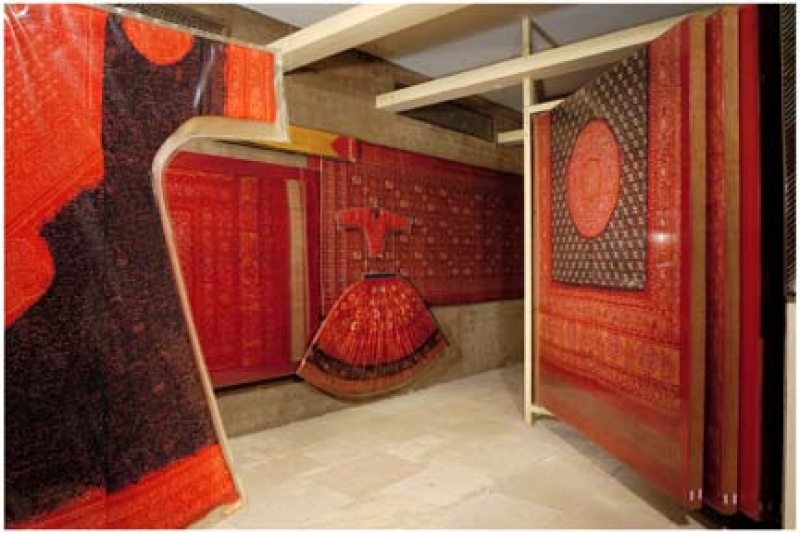
Image credit: Calico Museum Website
As you walk through the displays, be transported back to the 15th century where you will be able to see court textiles used by the Mughal and regional courts. There are also exhibits on regional embroideries of the 19th century, which include tie-dyed textiles and religious textiles. The galleries also include export textiles, Indian costumery, techniques of weaving, embroidery, dyeing and even techniques of block printing and making! Other than fabric, there are also exhibits that highlight miniature paintings, South Indian bronzes and art with Jain influences.
We recommend taking a guided tour that will give you a comprehensive introduction to the different collections. If you see anything you really fancy, perhaps you can even purchase reproductions of selected pieces on cloth and paper from the museum shop!
7. Sabarmati Riverfront and Pol

Image credit: wake4jake
The Sabarmati Riverfront is a waterfront along the banks of the monsoon-fed Sabarmati River, and was recently renovated to include various facilities such as a two-level promenade. This promenade creates a shared space that is able to host a variety of events, ranging from leisure and educational activities to even parks and plazas for commercial and retail development.
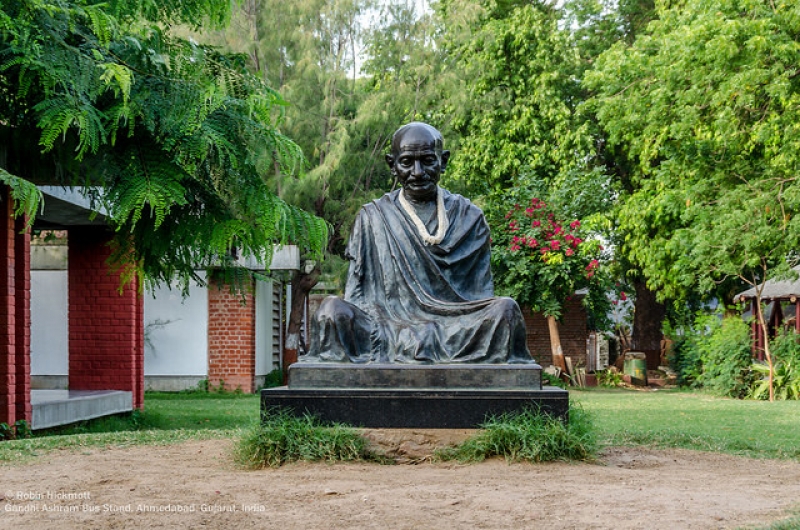
Image credit: Robin Hickmott
Be sure to drop by Sabarmati Ashram, which is just a stone’s throw away from the riverfront. The Sabarmati Ashram was one of the residences of Mahatma Gandhi himself, who lived there for 12 years with his wife. It was from this place that Gandhi led the Dandi march for freedom, which had much significance on the Indian independence movement as it was symbolic of an ideology that set India free. Thus, this place today is recognised as a national monument and a source of inspiration and guidance that is symbolic of Gandhi’s life mission.
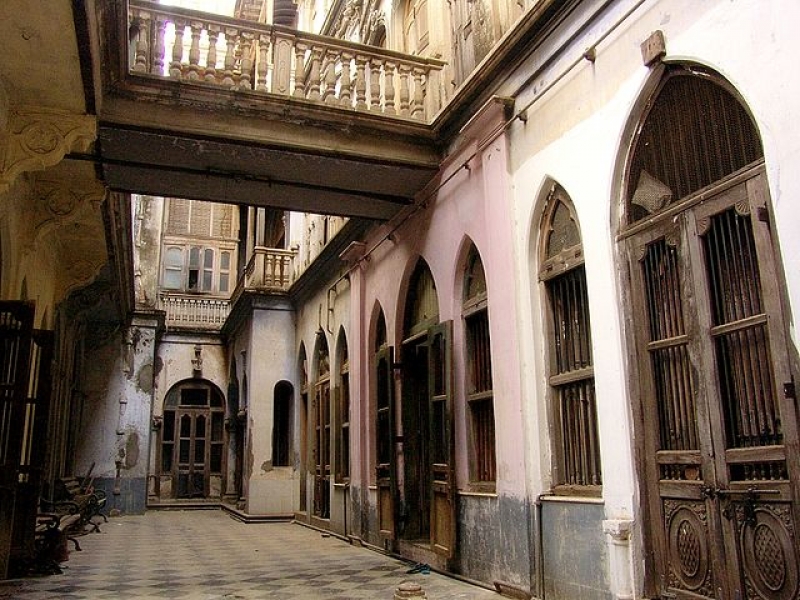
Image credit: Saad Akhtar
Near the Sabarmati Riverfront, you can also wander down the streets that are lined with traditional pol houses, which are another interesting cultural feature of Old Ahmedabad. Seemingly small and cramped together, these old residential housing units of Ahmedabad each has its own secret entrance that was only known to its inhabitants. These small entrances can be deceiving, and often open up to greater and more luxurious spaces within that were perfect for large family communities. Finished with intricate bird feeders and community wells, they are a celebration of Indo-Islamic architecture and art. The pol houses are also one of the defining features that Ahmedabad was awarded the title of UNESCO World Heritage City for.
8. Ahmed Shah’s Mosque / Jama Masjid
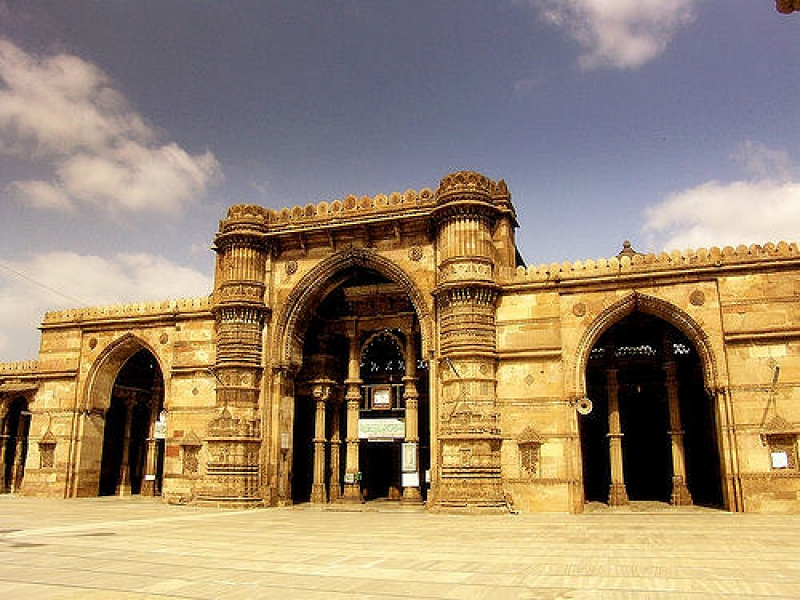
Image credit: Saad Akhtar
Ahmed Shah’s mosque was constructed in 1414 by Sultan Ahmed Shah, which as mentioned, was the founder of Ahmedabad City. The mosque is on the left of the Bhadra Fort, and is one of the oldest monuments around Ahmedabad. Carefully crafted with yellow sandstone and designed in a multitude of detailed patterns, the mosque certainly has an alluring appeal to it.
The interior of the mosque is also just as gorgeous with prayer halls made of black and white marble. Apart from a number of designated prayer rooms, there are also rows of pillars which bear Hindu figures and emblems. Even the pavements are made of white marble as well! Supported by 152 pillars and 4 arched gateways, the mosque is undoubtedly one of grand proportions. Hence, it is no surprise to learn that Ahmed Shah’s Mosque was initially a holy place that was only meant for the royal class! Today, the mosque sees hundreds of tourists each day who come to admire the Islamic-styled architecture.
9. Hutheesing Jain Temple
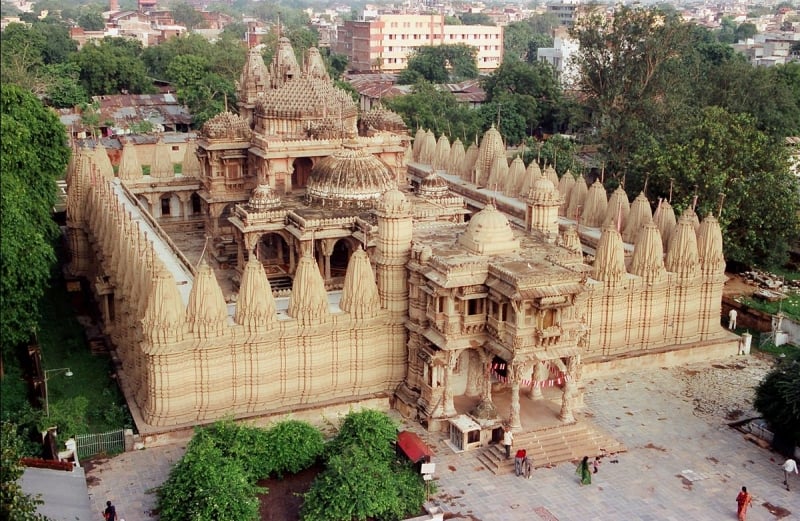
Image credit: Temples of India
The Hutheesing Jain Temple is truly a sight to behold! Made out of white marble, this structure has been held sacred to many Jain families from generation to generation. It was built in 1848 by a wealthy merchant in dedication to the 15th Jain tirthankar (spiritual leader), Shri Dharmanatha, and was said to have cost over a million dollars (!!). Constructed during a period of famine, traditional artisans specialising in stone and masonry working on this project were supported for over two years. Thus, to really appreciate the architecture of the temple, one should also see it more than just a place of worship, but also as a labour of love and a piece of art in itself!
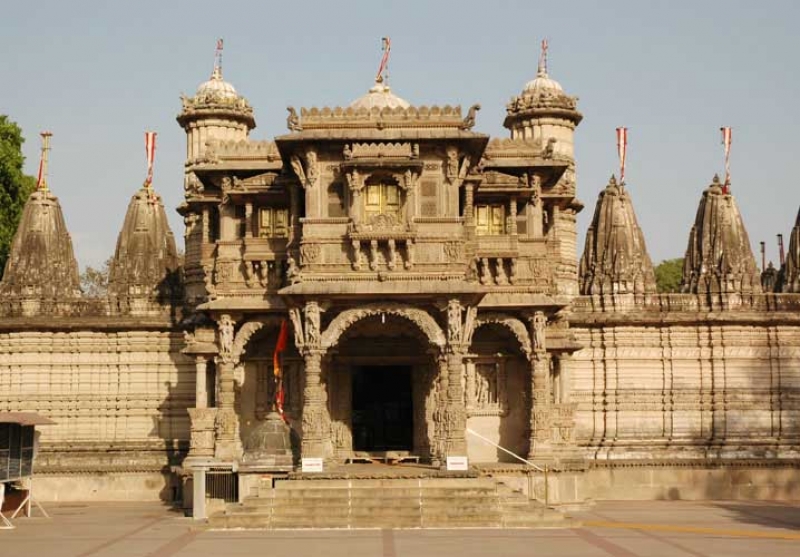
Image credit: Temples of India
From its dome-shaped structure on the main front to its “layered” architecture and unique design that consists of intricate carvings as the main aesthetic element, this Jain temple is truly a wondrous piece of work. Upon entry, visitors can navigate through large galleries and admire its equally striking interior that is filled with carvings. Afterwhich, head outside towards the courtyards where you will be able to see a total of 52 holy shrines, with each shrine consisting of an image of a tirthankar. This place is surely a must-visit for those who want to learn more or experience Jain culture and tradition!
10. Sidi Sayed Mosque
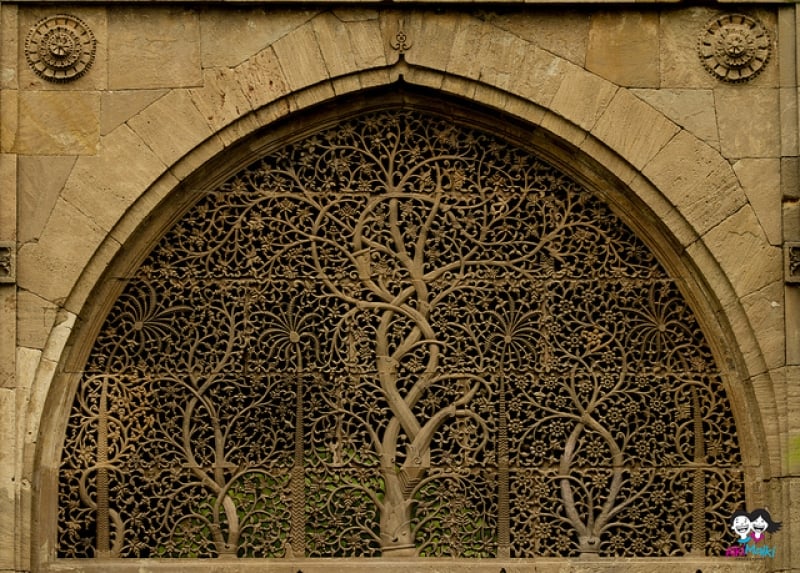
Image credit: Mehul Bhadani
More popularly known as Sidi Saiyyed Ni Jaali, this mosque is arguably one of the most popular in Ahmedabad. Built with yellow sandstone in an Indo-Islamic architecture style, it is famous for its beautifully carved and chiseled ten stone latticework windows, known as jalis. Trace your fingers across the jalis patterns, that can be found on the side and rear arches of the mosque, and admire its detailed ornamentation!
When visiting, one must go to the rear wall that is filled with square stone panels in different geometrical designs, inclusive of intertwined trees and palm motif patterns. The intricately carved lattice stone window is also the unofficial symbol of Ahmedabad city today, and has been abstracted for the logo of Indian Institute of Management Ahmedabad too!
So whether you’re a history buff, an admirer of architecture or someone who just wants to experience a strikingly different lifestyle and culture altogether, a trip to Ahmedabad promises to be both eye-opening and exciting, yet spiritual, at the same time. For more information and trip inspiration, bookmark India Tourism Singapore’s official website and Facebook page. Definitely one for the bucket list, we say!
Brought you by India Tourism Singapore.




